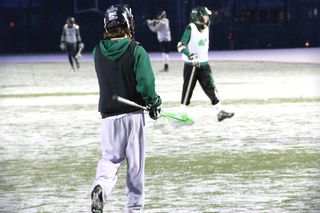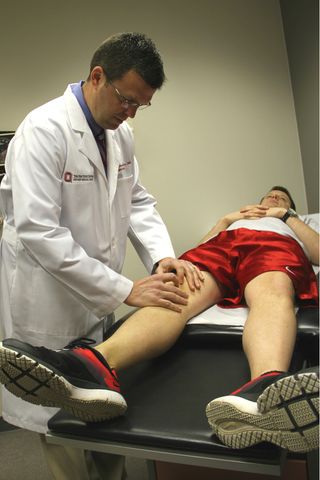
Preventing Injury From Spring Sports That Span Seasons
Dr. James Borchers is a sports medicine physician at The Ohio State University Wexner Medical Center. He contributed this article to Live Science's Expert Voices: Op-Ed & Insights.
With spring sports seasons ramping up across the country, it is important to note the unique challenges that these athletes face as they progress through their seasons. Unlike the indoor sports of winter, spring athletes often start practicing outside in frigid end-of-winter temperatures and end up competing in the humid heat of spring.
How can these athletes prepare themselves for this broad weather spectrum to prevent injury?

Muscles
Extremes in temperature can do different things to muscles. When it is cold outside, you can experience muscle contractions that you cannot control. Your muscles can also become stiff as a result of the frigid temperatures. In order to fight off injury, make sure you are warming up for longer in the winter than you do in the summer. It is better to start off slower in the cold and work your way up to your normal pace. Also, do not stretch by standing in place — this makes your muscles more susceptible to locking-up in the cold.
Face
Weather-related injuries don't end with muscles. All parts of the body are susceptible to frostbite when exercising in the extreme cold. While runners are often careful to wear layers on their arms and legs during winter exercise, they often leave their cheeks and nose uncovered. These areas are the most susceptible to frostbite and should be covered in the extreme cold. Athletes also need to beware of ice in the winter, as falls can lead to a plethora of injuries including breaks, strains and sprains.
Sign up for the Live Science daily newsletter now
Get the world’s most fascinating discoveries delivered straight to your inbox.

Cramps
On the flip side, the most obvious muscle-related injuries in the heat are cramps. Avoid cramps by drinking a ton of water. Muscles regulate body heat by releasing sweat, which obviously leads to a drop of fluids in your body. If your level of fluids drops too low, you face risks of dehydration and heat exhaustion. Also, just as in the winter, be sure to wear appropriate clothing in the summer. Don't wear too many clothes layers — that can prevent your muscles from breathing and leads to heat build-up in your body. Make sure you are wearing lightweight fabrics that will not inhibit the release of muscle heat.
Asthma
Warm weather and cold weather can both trigger asthma symptoms . Both cold air and humid air can lead to flare-ups that could become serious. During the winter, harsh winds can blow mold around, which exercisers can then breathe in. In summer, the heat and humidity encourages the growth of this mold. Always have an inhaler handy and always talk to a doctor if you think you have undiagnosed asthma symptoms.

It's also important to keep in mind common sense when exercising in the heat. Avoid strenuous exercise in the middle of the day when the heat is at its peak. Wear sunscreen to prevent sunburn. Know your fitness ability — if you have any hesitations about the heat, don't be afraid to sit out for a day or exercise indoors, if possible.
The most important takeaway message for training for one sport across two different seasons is to listen to your body. If you feel sick or sore, do not push yourself harder and hope that the issue goes away on its own. Always consult your team physician or family doctor when issues arise to ensure that this spring sports season will not be your last.
See the Ohio State Wexner Medical Center website for a list of injuries by sport and patient-education materials.
Follow all of the Expert Voices issues and debates — and become part of the discussion — on Facebook, Twitter and Google +. The views expressed are those of the author and do not necessarily reflect the views of the publisher. This version of the article was originally published on Live Science.
